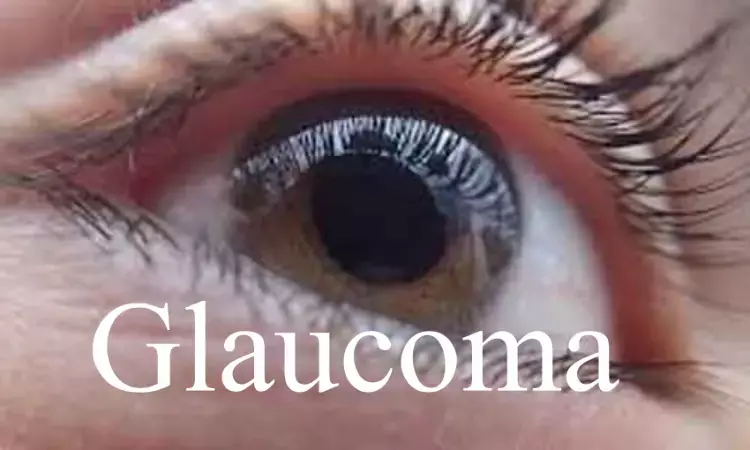- Home
- Medical news & Guidelines
- Anesthesiology
- Cardiology and CTVS
- Critical Care
- Dentistry
- Dermatology
- Diabetes and Endocrinology
- ENT
- Gastroenterology
- Medicine
- Nephrology
- Neurology
- Obstretics-Gynaecology
- Oncology
- Ophthalmology
- Orthopaedics
- Pediatrics-Neonatology
- Psychiatry
- Pulmonology
- Radiology
- Surgery
- Urology
- Laboratory Medicine
- Diet
- Nursing
- Paramedical
- Physiotherapy
- Health news
- Fact Check
- Bone Health Fact Check
- Brain Health Fact Check
- Cancer Related Fact Check
- Child Care Fact Check
- Dental and oral health fact check
- Diabetes and metabolic health fact check
- Diet and Nutrition Fact Check
- Eye and ENT Care Fact Check
- Fitness fact check
- Gut health fact check
- Heart health fact check
- Kidney health fact check
- Medical education fact check
- Men's health fact check
- Respiratory fact check
- Skin and hair care fact check
- Vaccine and Immunization fact check
- Women's health fact check
- AYUSH
- State News
- Andaman and Nicobar Islands
- Andhra Pradesh
- Arunachal Pradesh
- Assam
- Bihar
- Chandigarh
- Chattisgarh
- Dadra and Nagar Haveli
- Daman and Diu
- Delhi
- Goa
- Gujarat
- Haryana
- Himachal Pradesh
- Jammu & Kashmir
- Jharkhand
- Karnataka
- Kerala
- Ladakh
- Lakshadweep
- Madhya Pradesh
- Maharashtra
- Manipur
- Meghalaya
- Mizoram
- Nagaland
- Odisha
- Puducherry
- Punjab
- Rajasthan
- Sikkim
- Tamil Nadu
- Telangana
- Tripura
- Uttar Pradesh
- Uttrakhand
- West Bengal
- Medical Education
- Industry
Selective laser trabeculectomy has long-term efficacy over eye drops for glaucoma

UK: Selective laser trabeculoplasty (SLT) can produce greater results than routinely employed IOP-lowering eye drops, according to new findings from an extension of the LiGHT study that was published in the Ophthalmology journal.
Glaucoma is a chronic illness that requires lifelong therapy; the average life expectancy at the time of the initial diagnosis is 9–13 years, and the average life expectancy following trabeculectomy is 7.5 years. The United States Food and Drug Administration approved selective laser trabeculoplasty (SLT) for the treatment of glaucoma in 2001. Since then, SLT has become a more popular option to eye drops that lower IOP, but there hasn't been much research on how effective it is as a stand-alone therapy.
This study compares the clinical efficacy of the initial SLT treatment to IOP-lowering eye drops after 6 years of treatment in terms of health-related quality of life (HRQL) and clinical outcomes.
The initial SLT or eye drops were randomly assigned to patients in this prospective multicenter randomized controlled experiment. International standards served as the foundation for the goal IOP and monitoring intervals for each eye. Those in the SLT arm were offered a third SLT after the first three years of the experiment, if necessary; patients in the drops arm were allowed SLT as a switch or escalation in treatment. Analysis was done with treatment in view. Clinical efficacy and safety were the secondary goals; HRQL at 6 years was the primary outcome. In the LiGHT experiment, 633 patients (91.5%) of the 692 patients who completed the first three years joined the extension phase, while 524 patients (82.8% of those who entered the extension phase and 73% of those who were initially randomized) finished the trial after six years.
Conclusive points of the study:
- No changes in HRQL between the EQ-5D, GUI, and GQL-15 at 6 years were seen (all p>0.05).
- With 83.6 (SD 18.1) vs. 81.3 (SD 17.3), the SLT arm outperformed the drops arm in terms of GSS scores.
- The goal IOP was maintained in 69.8% of the SLT arm's eyes without the requirement for any kind of medical or surgical intervention.
- Increased disease development was seen in more eyes in the drops group (26.8% vs 19.6%, p=0.006).
- In the drops arm, there were additional cataract procedures (95 compared to 57 eyes, p=0.03), and 32 eyes in the drops arm required trabeculectomy as opposed to 13 eyes in the SLT group (p<0.001). No significant laser-related side effects were observed.
The researchers came to the conclusion that SLT is a safe and effective treatment for OAG and OHT, offering superior long-term disease control than initial drop therapy, with less need for incisional glaucoma and cataract surgery over 6 years.
However, they do provide a warning given that the majority of the study's participants had moderate instances of glaucoma or ocular hypertension, both of which had far more lenient IOP reduction targets than advanced glaucoma.
REFERENCE
Gazzard G, Konstantakopoulou E, Garway-Heath D, Adeleke M, Vickerstaff V, Ambler G, Hunter R, Bunce C, Nathwani N, Barton K; LiGHT Trial Study Group. LiGHT trial: 6-year results of primary selective laser trabeculoplasty versus eye drops for the treatment of glaucoma and ocular hypertension. Ophthalmology. 2022 Sep 16:S0161-6420(22)00732-1. doi: 10.1016/j.ophtha.2022.09.009. Epub ahead of print. PMID: 36122660.
Dr Kamal Kant Kohli-MBBS, DTCD- a chest specialist with more than 30 years of practice and a flair for writing clinical articles, Dr Kamal Kant Kohli joined Medical Dialogues as a Chief Editor of Medical News. Besides writing articles, as an editor, he proofreads and verifies all the medical content published on Medical Dialogues including those coming from journals, studies,medical conferences,guidelines etc. Email: drkohli@medicaldialogues.in. Contact no. 011-43720751


